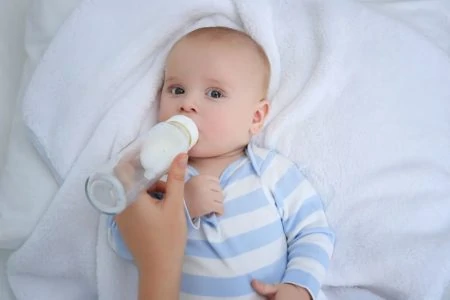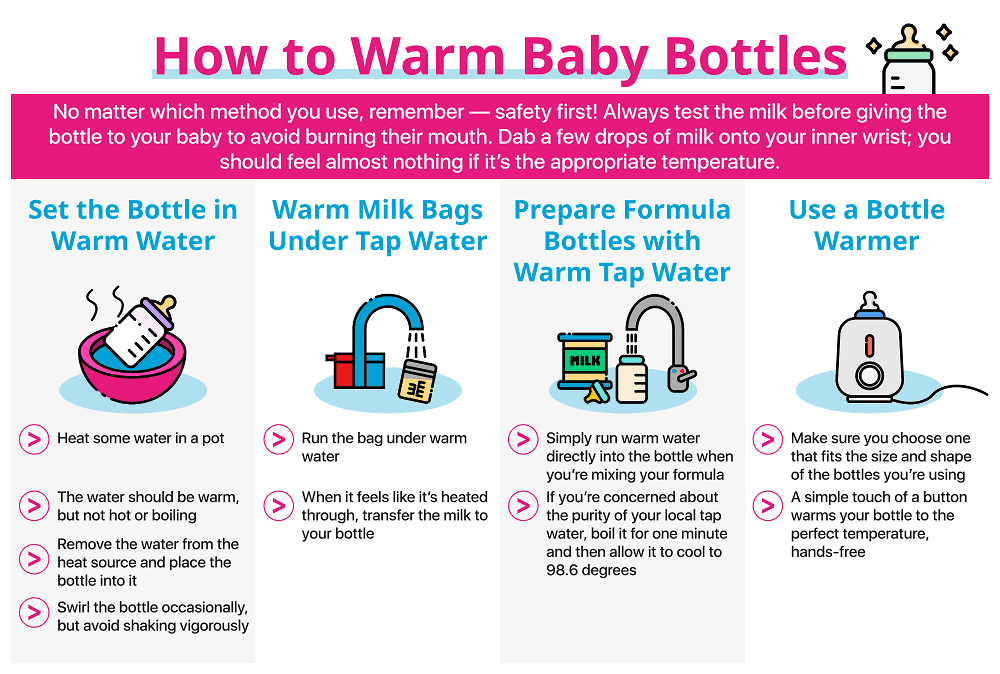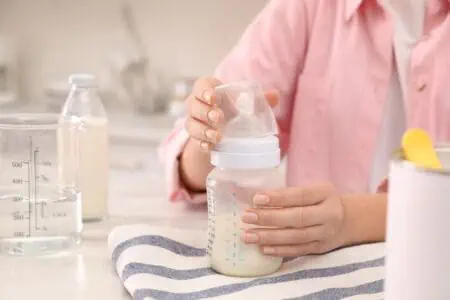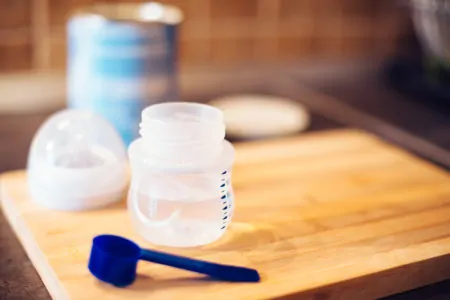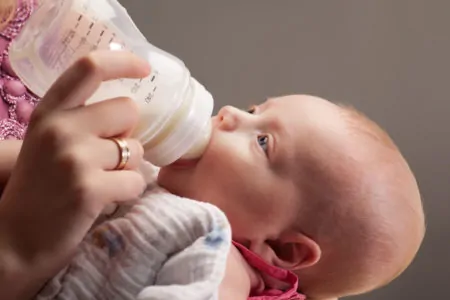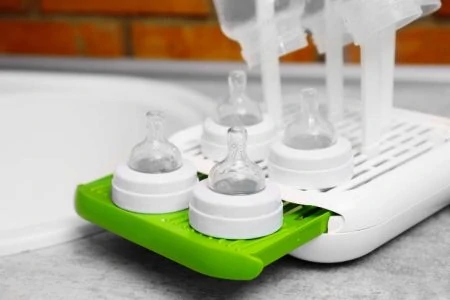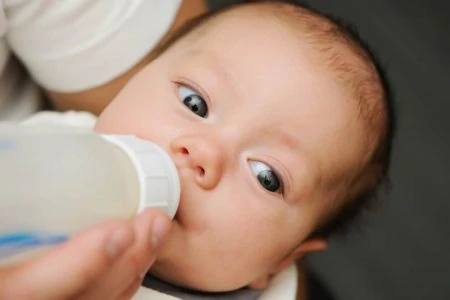There is nothing more stressful than trying to soothe a crying, hungry baby. When they want food, they want it immediately. They have zero patience for the time it takes to heat a bottle safely.
So, how do you warm a bottle quickly without creating hot spots or harming your little one? We researched the science and tested the methods to find the most efficient ways to get your baby fed fast.
Here is the safest way to handle feeding time.
Key Takeaways
- It is a preference, not a rule: You don’t actually have to heat a bottle. Many babies will drink room temperature or cold milk, though most newborns prefer it warm.
- Aim for body temperature: The goal is 98.6 degrees. Heating milk beyond this can destroy natural enzymes and immunizing properties.
- Skip the microwave: Never microwave a bottle. It creates dangerous hot spots that can scald your baby’s mouth, even if the bottle feels cool on the outside.
- Always test first: Regardless of the method, sprinkle a few drops on your inner wrist. If you feel nothing, it is safe. If it feels hot, let it cool.
The Basics of Bottle-Heating
Let’s make one thing clear: It is not medically necessary to heat a baby’s bottle (1). It is simply a matter of preference. While newborns often prefer warm milk because it mimics the breast, older babies are usually fine with lukewarm or even cold milk.
When a baby nurses, the milk releases at body temperature (around 98.6 degrees). Adults usually drink coffee at around 160 degrees, so body temperature feels barely warm to us. This is why “heating” a bottle is a misnomer.
Take Note
Instead of “heating” the bottle, gently raise the temperature to match the human body. This preserves nutrients and prevents burning (2).
There are several ways to tackle this task:
- Bottle warmers: The most consistent, hands-off method.
- Countertop water bath: Cheap and effective.
- Tap water: Great for breast milk storage bags.
There are also methods you should absolutely avoid:
- The Microwave: Microwaves heat unevenly. The liquid in the center can be scalding hot while the bottle feels cool.
- Stovetop boiling: Placing a bottle directly in boiling water heats it too fast and can melt plastic components or degrade the milk nutrients.
Warning
If your baby prefers their milk warmed, use the advice below to reach that perfect temperature safely.
Choose the Right Bottle Material
When you heat baby bottles, you need to consider the material. Glass baby bottles offer peace of mind regarding chemical leaching. However, they are heavy and breakable.
The good news is that all plastic baby bottles currently sold in the U.S. are BPA-free. Bisphenol A (BPA) is an estrogen-like chemical used to harden plastics, but it is linked to potential health issues (3).
If you use hand-me-down bottles from years ago, check the manufacturer code. If you are unsure, heat your milk in a glass container first, then pour it into the plastic bottle for feeding.
Heat Evenly and Test
Regardless of your method, heat distribution is key. Gently swirl the bottle (don’t shake it vigorously) to mix the fats and ensure there are no hot spots.
Always test the temperature. Shake a few drops onto your inner wrist (the sensitive skin there is a good gauge).
- Too Hot: You feel heat or a burn. Wait for it to cool.
- Perfect: You feel almost nothing (neutral) or a very faint warmth.
- Too Cold: You feel a distinct cool drop. (This is safe to feed, just maybe not preferred by the baby).
4 Ways to Safely Warm Your Baby’s Bottle
Here are four tested methods to warm milk without damaging nutrients or risking burns.
1. The Warm Water Bath
This is the classic countertop method. It requires no electricity or special gadgets.
Heat water on the stove or in the microwave until it is hot, but not boiling. Remove the water from the heat source. Place the bottle into the water and let it sit for a few minutes.
Swirl the bottle occasionally to circulate the milk against the warm bottle walls. This method costs nothing, but it is the slowest option. It can take 5–10 minutes to reach the desired temperature.
2. Warm Tap Water (For Bags)
If you are feeding expressed milk, the breast milk bag is your best friend.
Plastic storage bags are thin. This allows heat to transfer very quickly. Simply hold the sealed bag under warm (not hot) running tap water. It usually reaches body temperature in less than two minutes.
Once it feels neutral to the touch, pour it into the bottle. This is often faster than warming the bottle itself.
3. Fresh Formula with Tap Water
If you use powdered formula, skip the heating step entirely. Run your tap until the water feels warm (aim for that 98-degree feel). Fill your bottle, scoop in the powder, and mix.
If you have concerns about your local water quality, boil the water for one minute first. Crucial step: You must let boiled water cool to body temperature before mixing in the formula. Water hotter than 158°F (70°C) can kill the probiotics and nutrients in the formula (4).
4. Use a Bottle Warmer
Baby bottle warmers take the guesswork out of the process. You simply pop the bottle in, press a button, and it uses steam or a water bath to heat the milk to the exact right temperature.
This is ideal for night feeds when you are too groggy to mess with boiling water. Some models even include coolers for nightstand storage. If you travel often, look for portable warmers that plug into car adapters or use thermal insulation.
